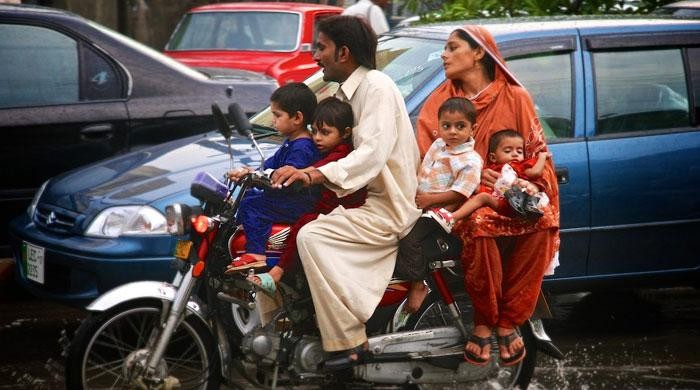
In Punjab where the contraception prevalence rate is the highest, convincing people for birth spacing is still a challenge

In Punjab, contraceptives and family planning services are available for free in government hospitals, population welfare centres, and with lady health workers.
At the Ganga Ram Hospital Lahore’s out-patients department, which receives patients in thousands daily, a family welfare councillor sits with the person charging nominal fee from the visitors, motivating and guiding women who ask for Gynae department to avail the services of Family Health Clinic (FHC) operating in Room No. 10.
Still, while 800 women visit the hospital’s out-patients department daily, 600 to 700 visit the FHC in a month to seek help for family planning. Adoption of contraceptive methods is slow though. "We were on average 6-8 siblings; today we have 2-4 children. Change is there. It took forty years. The population will come down but it will take time. Have patience," says a senior worker at the FHC.
Contraceptives are available for free in government hospitals and their use has increased. "They are increasingly in demand. Now that they are for free we give 30-40 contraceptives to a woman. We take name, address, details to check corruption. Anyone can get contraceptives from us," says Dr Farzana Rizwan, head of the FHC at Ganga Ram Hospital.
A performance chart on display in her room shows the department gave away 2700 condoms, 136 oral pills, 3-monthly shots to 59 women, placed 49 Copper-Ts inside them and did 18 implants in December 2016 -- all free of cost.
Read also: Guidance at the doorstep
Permanent methods of contraception are practised in big hospitals of the province only where gynae experts and anesthetists are available. All FHC incharge are doctors. A course in family planning is mandatory for FCPS, a post-graduation degree.
"The Punjab plans to launch its policy on population in the third week of February," says Naeemud Din Rathore, Director General Population Welfare Department Punjab. The province has the highest contraceptive prevalence rate (CPR) -- 41 per cent. Pakistan’s CPR is 35 per cent. The target is to achieve 50 per cent CPR by 2020. "The biggest challenge we face is changing the mindset. We offer contraceptives and services for free. We also keep beating the drum, that is, creating awareness," says the DG.
The government is offering counselling and services with regard to family planning through its 1900 Family Welfare Centres, apart from 121 Family Health Clinics and 117 Mobile Service Units, operating under its Population Welfare Department.
In rural Punjab, there are also Community Midwife Centres operating under the Maternal and Newborn Child Healthcare (MNCH) programme of the Health department. There is one community midwife (CMW) for population of ten thousands in Pakistan, selected on union base, operating in towns and villages. A midwife attends to normal delivery, has to refer a mother to hospital in time to save from maternal death due to high blood pressure or any other problem.
Humaira, a CMW in Chak 76, Eastern Branch (EB), Trikhani Adda, tehsil Arifwala, district Pakpattan, runs a community midwife centre in her village where she attends to 10 to 12 cases of delivery and receives 80 to 85 antenatal cases every month. By now she has counselled over 600 women seeking care in pregnancy during her seven years of service. There are eight villages in her union.
Humaira who holds a Master’s degree, moved to this village after her marriage. Soon she found there was no medical facility within 12 km radius. She witnessed a close relative’s death due to non-availability of timely medical help in childbirth and decided to get training as a midwife. Eligibility for getting training for CMW is matriculation and it lasts 18 months.
"The government has given the centre complete instruments both for delivery and placing contraceptives plus all the contraceptives for free. Medicines are also in good supply which we give to the women," she says.
"Convincing people to use contraceptives for spacing is a challenge in rural Punjab, whether they are men or women. It’s after they have had five-six children that they agree to use contraceptives," she says.